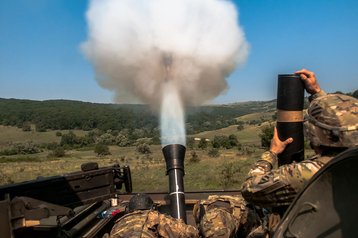The US Army is putting together a contract for a three-year long data center pilot project at Redstone Arsenal in Huntsville, Alabama.
The ‘on-premises, commercially-owned, commercially-operated cloud’ data center will replace 11 existing Army-run facilities, with the results of the trial set to impact how the DoD consolidates thousands of data centers.
Armies in the cloud
At the ‘September Cloud Breakfast’ event held by the Armed Forces Communications and Electronics Association (AFCEA), chief of enterprise architecture at the Army Architecture Integration Center, Col. Rodney Swann, said that the contract is expected to be awarded at the end of the month - but the process could be delayed until the first quarter of 2017, C4ISRnet reports.
He said: “We’re expecting that to be awarded and then we’ll be given the work there at Redstone as an on-premise Army private cloud instantiation.
“Redstone is going to be a key component of the Army cloud strategy. We’re formulating documents, we’re getting our policies in line with the operational intent of what we want to do strategically. Once we get the Redstone kicked off and get lessons learned from that, that’s going to inform a lot of how we go forward in cloud computing.”
Army CIO, Lt. Gen. Robert Ferrell, previously said of the plan: “Imagine a typical data center in DoD - it’s running at maximum, maybe 60 percent, that’s really best case. And so we’re actually leaving money on the table, so by collapsing these 11 data centers just imagine from an operational, from a technical, from an efficiency side of the house that we will save on doing that.”
John Hale, chief of enterprise applications at the Defense Information Systems Agency (DISA), said at the AFCEA event in Washington that the “biggest bang for the buck” would come from off-premise commercial clouds. AFCEA is a non-profit whose DC motto is ‘Bringing Government and Industry Together’.
Speaking at the ‘Network Readiness in a Complex World’ panel in July, Lt. Ferrell, said that “the end goal for the Army is to reduce its hundreds of data centers by fiscal year 2025 to “four enduring sites in CONUS [contiguous United States] and six abroad.”
Rise of the machines
But the Army has plans beyond 2025: in ‘Shaping the Army Network 2025-2040’, the military body writes: “By 2040, the Army will have implemented a software-defined data center (SDDC) architecture, where all infrastructure components are virtualized and delivered as a service.
“Control of the data center is fully automated by software, meaning component configuration is maintained through intelligent software systems. This is in contrast to traditional data centers, where the infrastructure typically is defined by hardware and devices.
“The challenge for 2040 will be to extend the edge of the SDDC to include devices carried by the Soldier or contained in weapon systems and equipment not located in the data center. This will require an analytical capability to understand where computing is available, which functions are being used and which information is being processed, as well as a predictive capability to enable the network to adapt to emerging information demands. To manage the network, a resilient and secure control fabric must exist to rapidly deploy and modify computing, storage, operational and business functions based on a commander’s information requirements.”
A secure, robust network is highlighted as essential for the US Army, with the document noting the increasing use of connected robots on the battlefield that “represent one of the most significant and game-changing technologies for the Army since the development of the tank in World War I.”
“As robotics move into an active combat role, connectivity, coordination and contingency will become increasingly critical. The robot and network of the future will have to support new rules of engagement in the face of an aware and active adversary. While autonomy may mitigate the need for lock-step authority, these robots will still be part of a coordinated fighting unit and must be able to provide real-time assessments, actionable intent and potential contingency alternatives.
“Security of the platform, the network and the data will remain paramount as the capability for lethality grows, but may be mitigated by machines that are more introspective and self-aware.”
The document continues: “With advances in artificial intelligence, robotic systems will start to become real assets in understanding and interpreting the current battle picture, and will begin to share decision making and action with the fighting Soldier. Robots that can interpret and react to dynamic threats in predictable and coordinated ways will move robotics from simple tools and faithful pack animals towards assistants that can share awareness in a fight.”
The document, which “is intended to guide network investments” concludes that in a future where “most of the world’s population will dwell in mega-cities,” the US Army’s current network has a significant support burden and does not “provide the mission flexibility and resiliency that emerging threats will demand in 2025 and beyond.”

